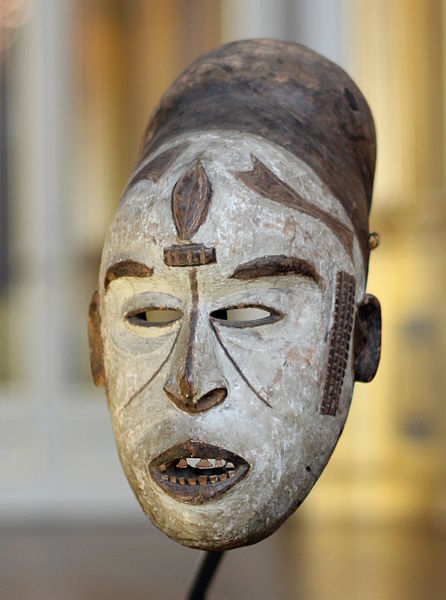African art in Western collections
Some African objects had been collected by Europeans for centuries, and there had been industries producing some types, especially carvings in ivory, for European markets in some coastal regions. Between 1890 and 1918 the volume of objects greatly increased as Western colonial expansion in Africa led to the removal of many pieces of sub-Saharan African art that were subsequently brought to Europe and displayed. These objects entered the collections of natural history museums, art museums and private collections in Europe and the United States. About 90% of Africa's cultural heritage is believed to be located in Europe, according to French art historians.
An Ibo mask at the Royal Museum for Central Africa, Belgium.
Oku costumes, Museo de Arte Africano, Valladolid
Art on display at the Royal Museum of Central Africa.
Benin Bronzes in the British Museum
African art describes the modern and historical paintings, sculptures, installations, and other visual culture from native or indigenous Africans and the African continent. The definition may also include the art of the African diasporas, such as: African-American, Caribbean or art in South American societies inspired by African traditions. Despite this diversity, there are unifying artistic themes present when considering the totality of the visual culture from the continent of Africa.
Image: Nok sculpture Louvre 70 1998 11 1
Image: Plaque Warrior and Attendants MET DT1231
Image: Brooklyn Museum 61.33 Ndop Portrait of King Mishe mi Shyaang ma Mbul (5)
Sudanese basket-tray, tabar of weaved natural plant fibre, coloured in different colours








